Comparison of a Machine Learning Method and Various Equations for Estimating Low-Density Lipoprotein Cholesterol in Korean Populations
- PMID: 35224055
- PMCID: PMC8866707
- DOI: 10.3389/fcvm.2022.824574
Comparison of a Machine Learning Method and Various Equations for Estimating Low-Density Lipoprotein Cholesterol in Korean Populations
Abstract
Background: LDL-C is the primary target of lipid-lowering therapy and used to classify patients by cardiovascular disease risk. We aimed to develop a deep neural network (DNN) model to estimate LDL-C levels and compare its performance with that of previous LDL-C estimation equations using two large independent datasets of Korean populations.
Methods: The final analysis included participants from two independent population-based cohorts: 129,930 from the Gangnam Severance Health Check-up (GSHC) and 46,470 participants from the Korean Initiatives on Coronary Artery Calcification registry (KOICA). The DNN model was derived from the GSHC dataset and validated in the KOICA dataset. We measured our proposed model's performance according to bias, root mean-square error (RMSE), proportion (P)10-P20, and concordance. P was defined as the percentage of patients whose LDL was within ±10-20% of the measured LDL. We further determined the RMSE scores of each LDL equation according to Pooled cohort equation intervals.
Results: Our DNN method has lower bias and root mean-square error than Friedewald's, Martin's, and NIH equations, showing a high agreement with LDL-C measured by homogenous assay. The DNN method offers more precise LDL estimation in all pooled cohort equation strata.
Conclusion: This method may be particularly helpful for managing a patient's cholesterol levels based on their atherosclerotic cardiovascular disease risk.
Keywords: Korean; cardiovascular disease; deep neural network; low-density lipoprotein; pooled cohort equation.
Copyright © 2022 Kwon, Lee, Baik, Chang and Lee.
Conflict of interest statement
The authors declare that the research was conducted in the absence of any commercial or financial relationships that could be construed as a potential conflict of interest.
Figures

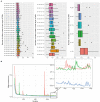
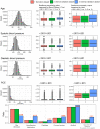
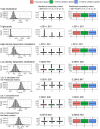

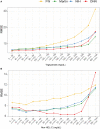
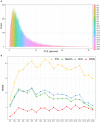
Similar articles
-
Comparative assessment of LDL-C and VLDL-C estimation in familial combined hyperlipidemia using Sampson's, Martin's and Friedewald's equations.Lipids Health Dis. 2021 May 5;20(1):46. doi: 10.1186/s12944-021-01471-3. Lipids Health Dis. 2021. PMID: 33952259 Free PMC article.
-
Comparison of the effectiveness of Martin's equation, Friedewald's equation, and a Novel equation in low-density lipoprotein cholesterol estimation.Sci Rep. 2021 Jun 29;11(1):13545. doi: 10.1038/s41598-021-92625-x. Sci Rep. 2021. PMID: 34188076 Free PMC article. Clinical Trial.
-
Martin's Formula As the Most Suitable Method for Estimation of Low-Density Lipoprotein Cholesterol in Indian Population.J Lab Physicians. 2023 Jul 13;15(4):545-551. doi: 10.1055/s-0043-1768951. eCollection 2023 Dec. J Lab Physicians. 2023. PMID: 37780882 Free PMC article.
-
Update on low-density lipoprotein cholesterol quantification.Curr Opin Lipidol. 2019 Aug;30(4):273-283. doi: 10.1097/MOL.0000000000000611. Curr Opin Lipidol. 2019. PMID: 31135594 Review.
-
Lowering Targeted Atherogenic Lipoprotein Cholesterol Goals for Patients at "Extreme" ASCVD Risk.Curr Diab Rep. 2019 Nov 21;19(12):146. doi: 10.1007/s11892-019-1246-y. Curr Diab Rep. 2019. PMID: 31754844 Review.
Cited by
-
Applicability of Artificial Intelligence in the Field of Clinical Lipidology: A Narrative Review.J Lipid Atheroscler. 2024 May;13(2):111-121. doi: 10.12997/jla.2024.13.2.111. Epub 2024 Feb 27. J Lipid Atheroscler. 2024. PMID: 38826186 Free PMC article. Review.
-
Comparison of Newly Proposed LDL-Cholesterol Estimation Equations.J Korean Med Sci. 2023 May 15;38(19):e145. doi: 10.3346/jkms.2023.38.e145. J Korean Med Sci. 2023. PMID: 37191848 Free PMC article.
-
Integrating New Technologies in Lipidology: A Comprehensive Review.J Clin Med. 2025 Jul 14;14(14):4984. doi: 10.3390/jcm14144984. J Clin Med. 2025. PMID: 40725677 Free PMC article. Review.
References
-
- Arnett DK, Blumenthal RS, Albert MA, Buroker AB, Goldberger ZD, Hahn EJ, et al. . 2019 ACC/AHA guideline on the primary prevention of cardiovascular disease: executive summary: a report of the American college of cardiology/American heart association task force on clinical practice guidelines. J Am Coll Cardiol. (2019) 74:1376–414. - PMC - PubMed
-
- Stone NJ, Robinson JG, Lichtenstein AH, Bairey Merz CN, Blum CB, Eckel RH, et al. . 2013 ACC/AHA guideline on the treatment of blood cholesterol to reduce atherosclerotic cardiovascular risk in adults: a report of the American College of Cardiology/American Heart Association Task Force on Practice Guidelines. Circulation. (2014) 129(25 Suppl 2):S1–45. 10.1161/01.cir.0000437738.63853.7a - DOI - PubMed
LinkOut - more resources
Full Text Sources

